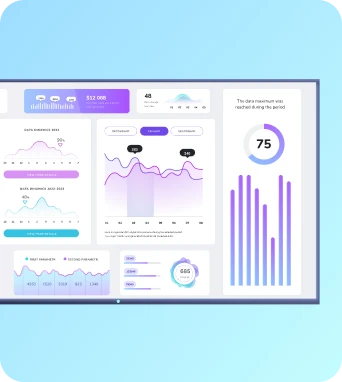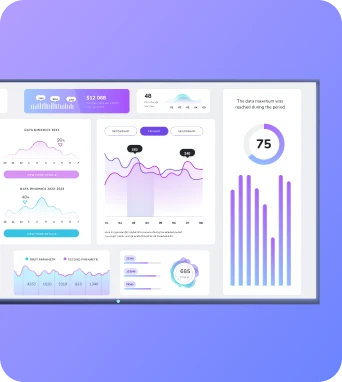AI-driven signage tools
AI-driven signage tools are software systems that apply machine learning and algorithmic decision-making to automate content creation, context-aware scheduling and dynamic display logic for digital signage, TV dashboards and workplace screens, improving relevance, engagement and operational efficiency across signage networks.
What is AI-driven signage tools?
AI models, content generation and contextualisation for high-availability signage networks
At the technical core, AI-driven signage tools rely on a mix of models and inference strategies to produce content and make display decisions. Natural language generation models are used to compose headlines, promotions or personalised messages from structured inputs; for example, a small transformer-based NLG model can convert product inventory and local promotions into concise text that fills a template on a digital menu. Computer vision models operate at the network edge to provide anonymised occupancy counts, age/gender estimations or object detection that trigger relevant creative — a retail window may switch to a particular promotion when footfall increases. Time-series models and reinforcement learning can optimise scheduling by learning which content sequences maximise KPIs such as dwell time or conversion rates. Implementation examples include running quantised TensorFlow Lite models on Android-based players for low-latency inference, or invoking cloud-hosted model endpoints via secure API calls where heavier models and richer context are required. Integration with signage players and orchestration layers requires careful engineering: content templates accept dynamic fields populated by AI outputs, while the signage platform exposes endpoints or webhooks that receive decision payloads and translate them into playlist actions. Caching strategies ensure assets are preloaded based on predicted needs to avoid network stalls, and model outputs are stamped with versioning metadata so that content provenance and rollback are straightforward. For enterprise deployments, privacy and compliance considerations demand on-device inference when possible, pseudonymisation of analytics, and clear policies for data retention and consent. These patterns preserve responsiveness and uptime across distributed signage networks while enabling contextualisation that is both automated and auditable.
Deploying and integrating AI-driven signage tools across players, dashboards and content pipelines
Deploying AI-driven signage across an estate involves selecting an architecture that balances latency, compute and manageability. A common pattern splits responsibilities: lightweight models run on the edge for immediate triggers and offline resilience, while heavier model training and batch inference occurs in the cloud. In practical terms, a Fugo.ai deployment might use an edge agent on each player to evaluate simple rules and serve cached dynamic templates, while a central ML service orchestrates complex decisions, sends compiled playlists to the Fugo API, and pushes assets to a CDN. Considerations include deciding which inference must be real-time versus which can be scheduled, provisioning player hardware with adequate CPU/GPU headroom, and implementing model update mechanisms that do not interrupt playback. Containerised deployment of model servers with orchestration and rolling updates reduces downtime, and offering a feature flag system enables staged rollouts and A/B testing of AI-driven behaviours across a subset of screens. Common pitfalls in rollout include overloading players with models that exceed their compute capacity, neglecting fallback content for offline states, and insufficient monitoring of drift in model accuracy when upstream data changes. Effective monitoring combines player telemetry, model performance metrics and business KPIs; anomaly detection can alert when predicted engagement diverges from observed behaviour. Optimisation techniques include model pruning and quantisation to reduce footprint, batching non-critical inferences, and using CDNs and delta updates for assets and templates to limit bandwidth consumption. Security controls such as TLS, rotated API keys, scoped service accounts and audit logs are essential when integrating third-party AI services. Operationalising these elements yields a reliable, scalable signage estate where AI augments editorial intent and automates repetitive decision flows while remaining manageable by network administrators and IT teams.
Final Thoughts on AI-driven signage tools
Keep the learning going...
Advantech digital signage players
Advantech digital signage players are purpose-built media edge devices and embedded PCs from Advantech designed to run signage applications, decode multimedia, and connect to content management systems. They provide reliable playback, network management interfaces, and hardware acceleration for video, making them suitable for TV dashboards and workplace displays.
AI-driven analytics
AI-driven analytics in digital signage applies machine learning, computer vision and statistical inference to automatically collect and interpret viewer behaviour, dwell time and contextual signals from displays and sensors. The processed insights drive content sequencing, audience measurement, dynamic personalisation and automated optimisation across TV dashboards and workplace displays managed by platforms like Fugo.ai.
AI-optimized layouts
AI-optimized layouts refer to automated layout generation and adaptation for digital signage and dashboards using machine learning. These systems analyse content, screen dimensions and audience signals to select placements, sizes and timing that improve readability and engagement while meeting constraints such as brand rules and playback performance.



